Visual Content Reigns in Content Marketing – Here’s Why
Propelrr
November 16, 2021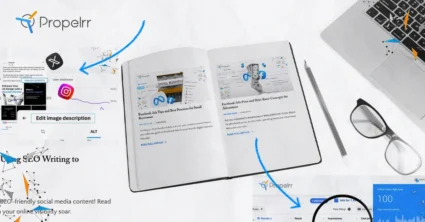
Here are the irrefutable reasons why visual content will always reign above all content formats.
People around the world love consuming visual content, above all. Be they packaged in printed or digital form, audiences online gravitate towards visual content. And, for digital marketers seeking to appeal to these audiences, this love for visuals spell promising opportunities to boost organic traffic and drive more conversions in creative and memorable ways.
In fact, visual content may continue to dominate current and future trends in online marketing. After all, the human brain can process images much faster – 13 milliseconds, to be exact – than text. Add to that, statistics show that majority of customers (80%) expressed that they recall a visual ad more than versus if they read about it.
The more recall, the more conversions.
That’s exactly why brands – some of them being your competitors – continue to dedicate a huge chunk of their budgets into creative design strategies and executions.
What is visual content?
In case this comes as news to you, let’s do a quick run-down of what visual content is. And as a long-standing content marketing agency we’ll tell you now: Given the many innovations digital has seen over the years, there are a ton of them you can explore.
In simple terms, visual content are images, graphics, illustrations, and any visuals that are used to communicate a brand’s message. From the word ‘visual’ itself, you can understand well enough that this is content meant to draw the eyes, and communicate a message at just a glance.
On digital media, it’s used to achieve various goals such as:
- increasing brand awareness among your target audiences;
- pique the interest of potential customers;
- compel them to convert, and much more.
These are also often used to explain difficult concepts through diagrams or data visualization; helping people better understand technical terms and contextualize numbers.
Types of visual content
As we mentioned earlier, there are tons of visual content and each of them have powerful benefits of their own.
But it is vital to remember that not all visuals will attract your customers’ attention, nor relevant to your business. So if you do consider using any of the varieties of visuals on this list, make sure you have a clear understanding of your ideal audience, and your business objectives.
- Photos or images. These can either be free or paid stock images, or original photos for your brand. Whichever you choose to go with, remember that images should help tell the story of your brand and should fit the context of captions or words that accompany them.
- Videos. Are perhaps one of today’s most powerful visual content, thanks to platforms like YouTube and TikTok that have made video production and sharing them more accessible. In marketing, videos are used to inspire, educate, and engage audiences through dynamic visuals – be they animated, or live action videos.
- Infographics. Help present in-depth and often complicated information to your audiences. This type of visual content helps summarize large and extensive amounts of data in a visually-appealing and digestible way.
- Memes. Marketing through humor never gets old; and, in the age of the internet, you achieve this mainly through memes. Memes are a great form of visual content that can easily go viral among audiences. This then allows you to sky-rocket not just your awareness, but engagement metrics, too.
- Headers or banners. Banners that you typically find on your LinkedIn, X, and Facebook profiles are a form of visual content that can be used to establish a connection with audiences immediately. Often located at the top of your profiles and pages, your headers and banners are a great medium for instantly conveying an important message about your brand and business.
- Pull quotes. Even before the digital era, print and traditional media have been using pull quotes to attract prospective readers’ attentions. Pull quotes still prove to be timeless visual content, as they are currently being used on digital to highlight your brand message and customer reviews.
- GIFs. Who knew GIFs can also be great visual content for marketing purposes? If you do not have time to create a video, GIFs are a good format to explore for repurposing or repacking that video content. GIFs are ideal for Story elements in Instagram or Facebook, and can be used as quick, yet highly-engaging content for X.
- Screenshots. Screenshots are your go-to option if you want to introduce your products to customers. This variety of visual content helps the audience have an inner look at your products’ features and determine how each feature works. Use screenshots for new products and to show user testimonials to showcase your products’ or services’ efficiency.
Why is visual content important in marketing?
- Visual content compels actions
- It creates a whole new experience
- People love stories
- Visual assets are a personality, a mood, and a voice
- Numbers are suddenly interesting
- Visuals dominate the sharing game
1. Visual content compels actions
Research shows that 65% of the general population are visual thinkers. Visuals help greatly in creating an easier recall, most especially when you are representing a brand. It also plays a significant role in decision making, as visuals greatly increase the effectivity of your calls-to-action (CTAs), may it be asking your audience to do something like simply hitting a button.
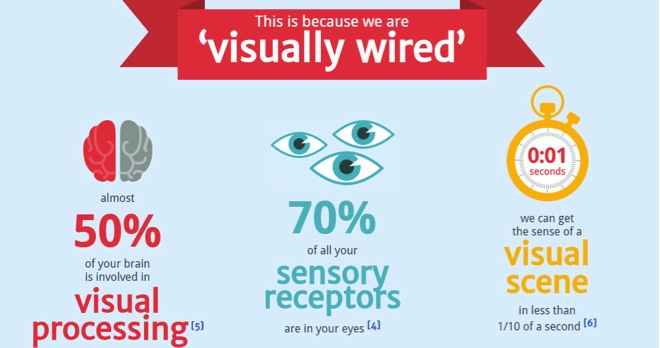
Infographic by NeoMam Studios
2. It creates a whole new experience
When you’re conversing with someone, what do you immediately notice? It’s not how they look, but how they speak. And I’m asking you this because a huge part of marketing is about conversations.
Images can help you finish a sentence when you can’t seem to find the right words to say to drive your point. Visual content achieves this splendidly by framing the situation into the right context.
Case in point:

Photo courtesy of Szcery Jerry
Doesn’t take much to explain what I meant just now when I said “wasted” now, does it?
Visual assets create set up the scenario for your story. It relieves the audience the agony of not understanding immediately what you’re trying to say by providing an immediate visualization of your point.
In the case of using it for your business, you can apply this in communicating your value proposition or the experience of your brand.
Say you want to communicate the exact experience of shopping with your brand. It would be much easier to communicate that and, subsequently, influence their purchase decision, if you visually tell them about that experience.
Whatever your value proposition is, visuals help in communicating that to your customers by providing a more profound understanding of it in showing, rather than in telling them about it.
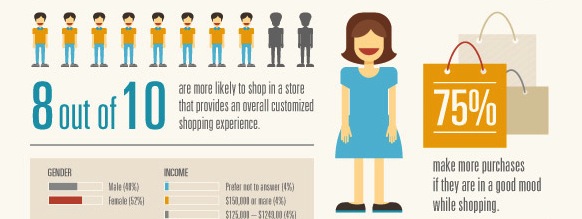
Infographic by Synqera.com
3. People love stories
Smartphone sales in 2020 of rounded up to a total of 1.38 billion units. While those figures don’t represent the entire global population, they are enough to make it hard for you to come across someone who doesn’t have a smartphone.
That is one of the primary reasons why visual content is spread everywhere online. With the trifecta of photo and videography capabilities, instant sharing, and constant internet connectivity, right in your hands, it easily enables our love for storytelling. We love to take pictures. We love to share these pictures with a quick story. And we love the feedback we get from people who read or see these stories.
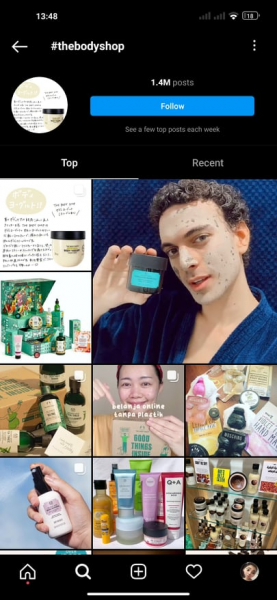
Screenshot of the #thebodyshop landing from Instagram
In digital marketing, this has empowered brands to pitch into the conversation with stories that you and your audiences equally care about. And if your brand is part of their conversations (ie. user-generated content), then all the better. Additionally, it makes social listening and monitoring a walk in the park, with most users active on social media platforms and other sharing sites.
Talk about free advertising, right?
4. Visual assets are a personality, a mood, and a voice
The concept that visual sells is nothing new, but that thought alone isn’t the sole purpose of good content.
Think about it: When you look at visuals posted by your favorite influencer or brand, what do you take in as you see it?Okay, great composition, sure. Great editing – plus points. But what shines above it all is their personality – how you’ve come to know them based on their content, and the reason why you look forward to more.
To communicate your brand personality effectively, takes a lot of trial and error in: first, discovering your voicel; and second, learning where and how you can best reach your audiences. In visual platforms like Instagram, you can play around with having a lengthy caption narrating your brand story. But nothing is better than being able to visualize concepts that are difficult to put into words.
That is one big role of the visuals in your content. It should create and communicate a personality. It should set the mood. Great visuals should translate data and knowledge to user experience.
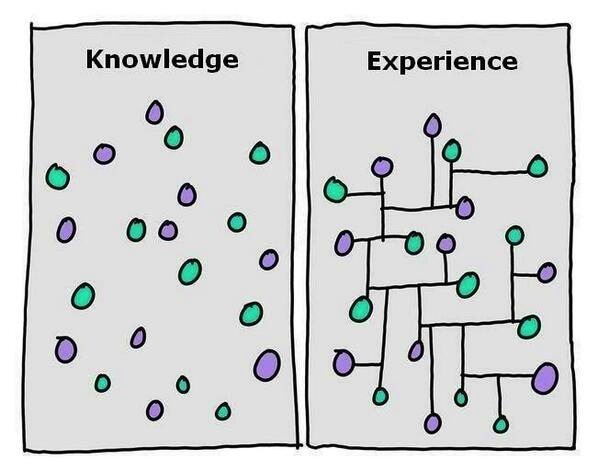
Photo courtesy of Buffer App
5. Numbers are suddenly interesting
Let’s face it, most of us hate this subject. When we are faced with numbers, all we can do is count.
Making sense of numbers is a job not everyone can do splendidly through verbal explanations. But with the help of visuals, even numbers can turn into a pleasant learning experience. Encapsulating the whole context of visual and information hierarchy to turn seemingly senseless numbers (I prefer to call it data), into a very immersive story.Visuals give these meaningful data another chance to tell the true story, when people give up on the confusing arithmetics.
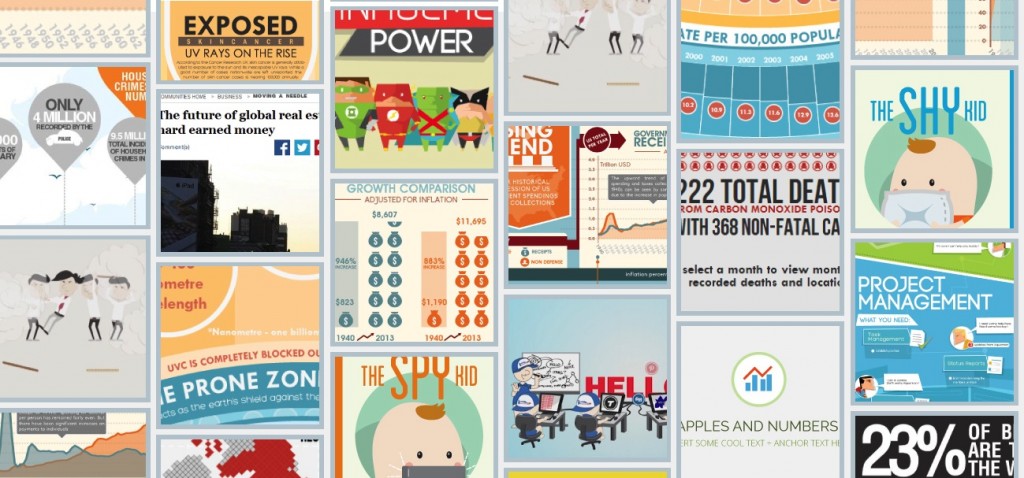
Infographics by Propelrr
You might have noticed by now that a lot of images included in this article are infographics. Because they’re everywhere, for good reason.
In creating infographics, always remember these three simple steps:
- Data
- Story
- Visuals
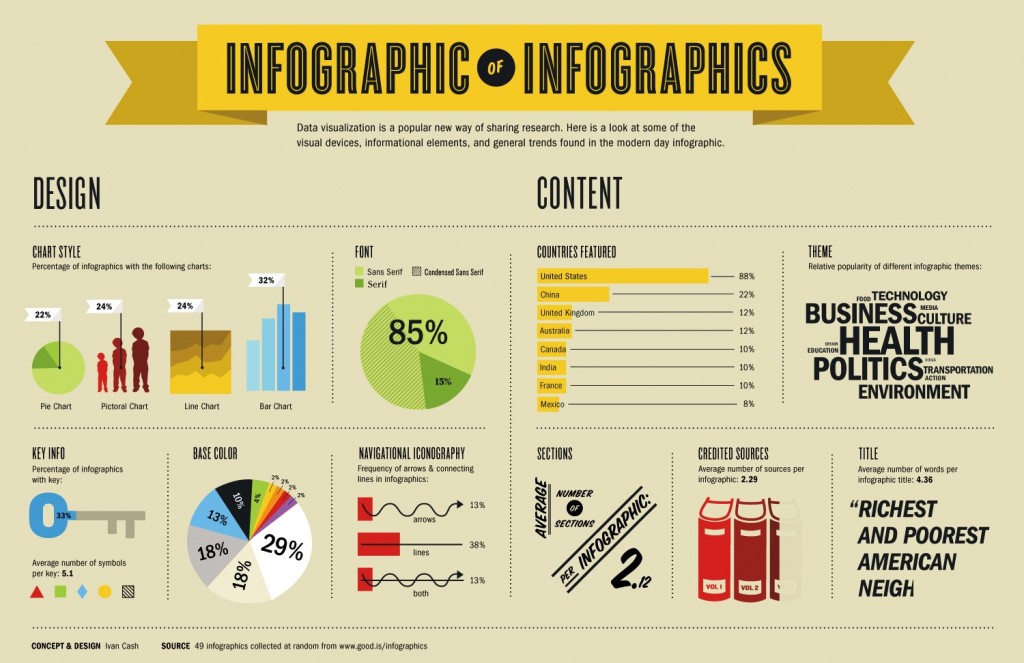
Infographic by Ivan Cash
No shortcuts, and in that exact order. With the right data and right niche, you can surely pump up your content marketing campaigns and have an infographic for a flagship.
6. Visuals dominate the sharing game
If there’s a formula for virality, it may almost always contain visual content in the mix.
People crave information constantly. On the internet, this craving is served by the minute, 24/7. Arguably, with the amount of content that comes out online, posts that are just huge chunks of texts find it difficult to shine and take the lead.
This is an old-age war among marketers, advertisers, and businesses. How do you exist – moreover, standout – in a crowded media stream?
Enter visual content to save the stories in a sorry state of ignored text.
Visuals can instantly turn your pure 3,000 huge chunk of text into an appetizing gourmet meal ready to be consumed. The same way our science books “try” to make chemistry look cool. Noah Kagan, founder of Appsumo, proved this by analyzing the social share counts of over 100 million articles. Can you take a quick guess to what type of articles gets shared the most?
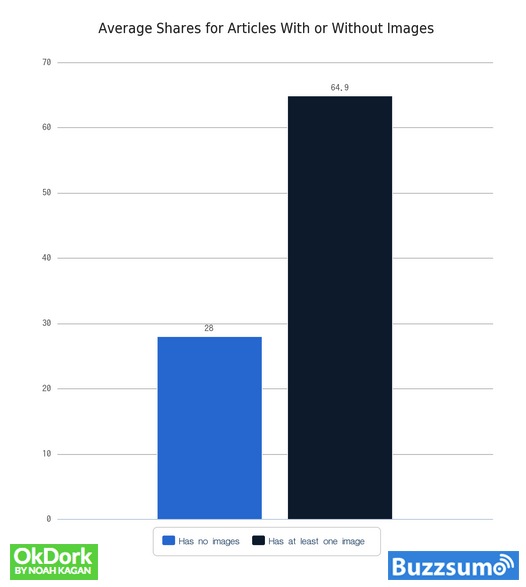
Photo courtesy of Huffington Post
Unsurprisingly, articles with pictures got shared the most on social media, because they give extra life to the written content. They help tell the story in ways words can’t capture.
Key takeaways
On the internet, your brand’s content isn’t just competing with the stuff coming from your competitors. If you look at the entire digital ecosystem, it’s also even competing with the content coming from media and your own audiences. A key element to standing out is your visuals and, in the pursuit to develop your visual identity, remember these important notes:
- Invoke emotions. People don’t act on information. They act on the emotions they experienced form learning about the information. In posting visuals, consider how you’re going design it in a way that inspires certain feelings in your audiences.
- Tell a story. Visual storytelling comes as a breath of fresh air from the walls of texts that people read and see in the typical articles today. When telling your brand’s story, partner the text information or, better yet, allow visuals to take the lead in the storytelling.
- Know your audience. Once again, it all boils down to knowing your ideal audience. Be it text-only, visual-only, or text and visual combined, none of it will work if it’s ultimately irrelevant to your audience.
How do you tell your brand stories? Do visuals work for you better or does text still win the heart of your audiences? That would be an interesting discussion. Make sure to sound-off in the comments, or drop us a line about it on Facebook, X, or LinkedIn.